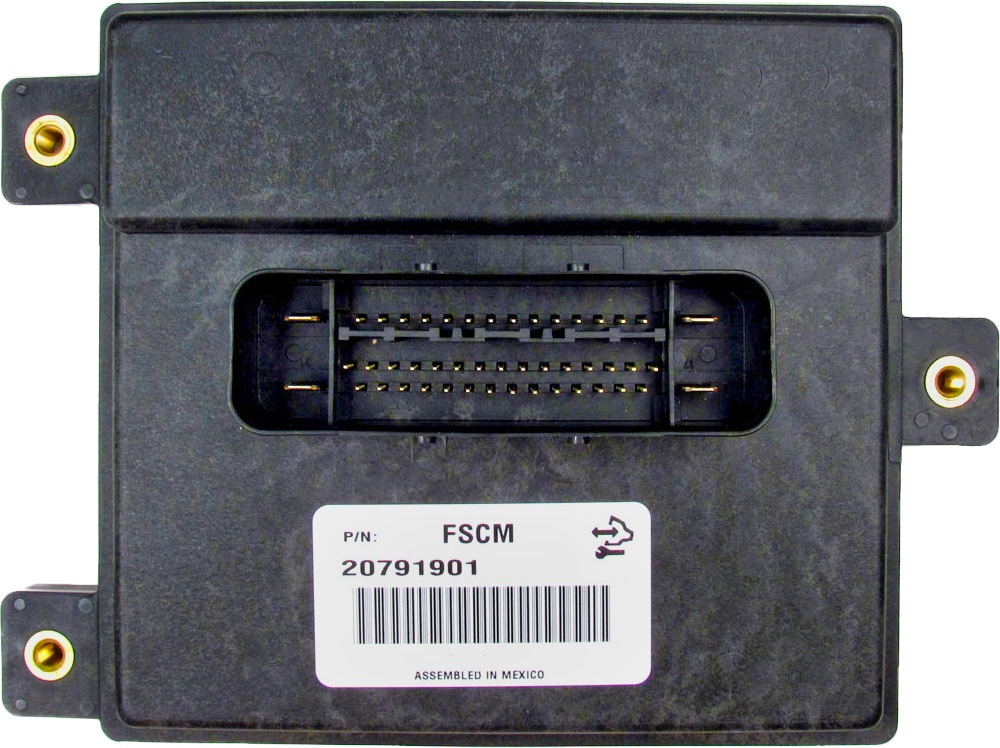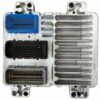Restore Your Truck’s Power and Reliability
Is your truck stalling, hesitating, or refusing to start? A faulty Fuel System Control Module (FSCM) is often the culprit, leaving you stranded and frustrated. This critical component regulates the voltage sent to your fuel pump, and when it fails, it can cause a host of debilitating engine problems. This pre-programmed FSCM is the direct-fit solution to restore your vehicle’s precise fuel delivery and get you back on the road with confidence.
Common Symptoms & Your Solution
If you’re experiencing issues like the engine cranking but not starting, sudden stalling while driving, a check engine light with codes like P069E, P0230, or P0606, or a “Service Fuel System” message, your FSCM is the most likely cause. Don’t let a small electronic module sideline your entire vehicle. This unit is the definitive fix, arriving at your door already programmed to your specific vehicle using your VIN. This completely eliminates the need for an expensive trip to the dealership for programming, saving you time and money. It’s a true plug-and-play solution for the professional technician or the capable DIYer. This is the part you need to solve your fuel system problems and get your 2010-2012 Colorado Fuel System Control Module working as it should.
- ✔ Plug & Play Installation: This module is professionally flashed with the latest GM software to your vehicle’s unique VIN. Simply install it and you’re ready to go—no dealer visit required.
- ✔ Solve Common Fuel Issues: Directly addresses no-start conditions, stalling, hesitation, and diagnostic trouble codes (DTCs) related to the fuel pump driver circuit.
- ✔ Cost-Effective Repair: Avoid the high costs and scheduling hassles of dealership programming with a module that arrives ready for installation right out of the box.
- ✔ OEM-Grade Functionality: Engineered to meet or exceed original equipment specifications for a perfect fit and reliable, long-term performance.
- ✔ Broad GM Compatibility: Replaces a wide range of part numbers, including 20791901, 20877116, and 20850927, ensuring compatibility across many GM trucks, vans, and SUVs.
- ✔ Peace of Mind Protection: This unit is backed by our one-year replacement warranty.
An Expert’s Insight on FSCM Failure
As a technician, I’ve replaced hundreds of these modules. The number one reason they fail is their location. On most GM trucks and SUVs, the FSCM is mounted directly to the frame rail, where it’s constantly exposed to water, road salt, mud, and vibrations. Over time, this harsh environment causes corrosion on the circuit board and connectors, leading to intermittent or complete failure. When you install your new module, I recommend applying a thin layer of dielectric grease to the connector pins to provide an extra barrier against moisture and ensure a solid, long-lasting connection. This simple step can significantly extend the life of your new 2010-2012 Colorado Fuel System Control Module.
Frequently Asked Questions
Do I need to have this module programmed by a dealer?
No. The main benefit of our service is that we program the module to your vehicle’s specific VIN before we ship it. This makes the installation process simple and straightforward, with no special tools or dealer visits required.
Where do I provide my vehicle’s VIN?
After you complete your purchase, please send us a message containing your 17-digit Vehicle Identification Number (VIN). We cannot ship your part until we have this information to program it correctly.
Where is the FSCM located on my truck?
On most GM trucks and full-size SUVs from this era, including the Colorado, Sierra, and Silverado, the Fuel System Control Module is typically mounted on the driver’s side frame rail, often near the spare tire.
My original part has a different number. Will this still work?
Yes, this module is a direct replacement for several part numbers, including 20791901, 20877116, and 20850927. As long as your vehicle is on the compatibility list, this part will function correctly.
What tools are needed for installation?
Installation is typically straightforward and requires basic hand tools, such as a socket set to remove the mounting bolts and a tool to disconnect the electrical connector. Always disconnect the vehicle’s battery before starting any electrical work.



